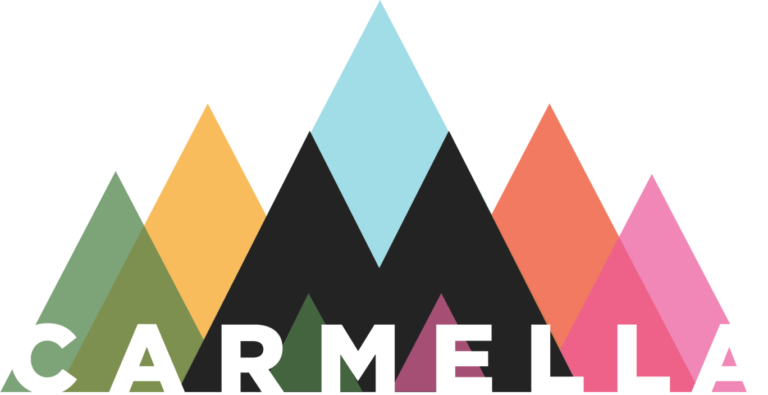Generate a Great Social Media Presence and Get the Attention Your Business Deserves
“Social media is like a piece of string”, says Stephanie O’Brien “You can simply choose how much string you want to snip off at any time depending on your goals”. It’s not unrealistic to feel like you can spend forty hours per week on Instagram alone – as a business owner how do you spend your time? Are you buying customers now or buying customers for the future? These are two very different tactics. If you know that
social media is a key ingredient to grow your business, read on.
From ICQ in the early 90’s until now, we’ve been staying up with the trends and helping business owners develop content that delivers ROI.
Are you wanting to make a change right now? If so, the following suggestions will educate you regarding the tactics you have to utilize to be competitive in 2019. This guide will help your business stay afloat in the social media marketing ocean.
1. The first step is to evaluate what you are currently doing by conducting a social media audit. This is one of the most valuable things Carmella does for businesses and it’s not easy to do for yourself. We akin this to trying to write a new year’s training plan for yourself on January 2nd (unless you’re a strength and conditioning specialist). The intentions are there but the program may or may not be realistic and you may miss some of the most obvious changes that need to be made. You CAN
conduct an audit on your own but we suggest getting a marketing agency to complete this step for you. Before you can think
strategically about your social media usage this year, you need to take a look at what has and has not been working for your brand. You might learn some things about consistency between branding, style and business opportunities you are missing out on.
There will be some very important action items found in the audit, and you will need to get those changed straight away.
2. Before you can lay out a social media plan for your business, you need to know who you are speaking to; your ideal client also known as your target audience. If you’re writing ‘Do it Yourself’ blogs you are attracting the businesses who are trying to bootstrap and want to learn how to do what you do at a basic level. If that’s your ideal client, perfect. If it’s not, then it is time to rethink the kind of blogs you are producing.
Who is your ideal client?
It’s not enough to know about demographics, behaviours and interests. You also should investigate their habits, where they hang out online and what type of content is most appealing to them. Develop some sample messaging as well as key phrases and hashtags that will resonate with your target audience.
So, who is your ideal client?
3. Complete a social media style guide. A social media style guide is your map to guide how your brand appears on social media. Your style guide will relate to and be part of your overall marketing brand guidelines. It should be a living document that can evolve over time. Carmella has a simple guide which we complete with our clients to ensure that we reflect their brand voice appropriately on social media.
4. Competitive analysis
This should be done regularly in conjunction with your social media audit. List three competitors:
________________
________________
________________
What is great about their website? ________________
What can they do better? ________________
Newsletter? ________________
Blogging? How often? ________________
Social media
Facebook – How often are they posting, how many followers, how is their content, are they running any ads? ________________
Twitter – How often are they posting, how many followers, how is their content?
________________
Instagram – How often are they posting, how many followers, how is their content, are they using IGTV, Instagram Stories? ________________
Other – ? ________________
Ideas worth copying? ________________
5. It’s time for your
social media plan! Don’t be scared and don’t skip this step or say “Oh, I’ll come back to it”. Take one sheet of paper and write the following information down: Business Goals
Look at the next 90 days and write down three goals as well as any challenges you might have to achieve them. Based on your goals, what should your social media strategy focus on? (Example: sales, promotion, brand awareness, new products to market, showcasing your general sense of awesome?) We always ask, what does success look like?
Audience -You already know this!
Marketing Goals – What goals do you want to achieve (they should ladder up to your business goals).
Facebook
When are you posting? How often?
What type of content?
What makes you unique?
Events, promotions, sales coming in the next 90 days
Live videos?
Instagram
What will your grid look like?
Filters, B&W, promotion, text?
Hashtags in post or comment? Emoji’s?
Content short and punchy or long storytelling?
Instagrid’s or not? How often?
Video?
Live?
Instagram stories?
Twitter
How often, when?
Moments?
Live?
How will you get engagement?
Key Messages
Keywords
Hashtags
Key accounts to engage with
Post 3-4 days/week
Purpose/Target Audience Focus:
· Create content for each persona.
· Share visuals, polls, videos, and other initiatives, connect with vendors, and partners and interact with the target audience.
· Focus: Choose one of the personae above
· Consider seasonality and geographic location when posting about certain brands.
6. Where should a busy business owner focus their time? While the first five steps of this blog can be completed by your team, this can’t. As a business owner, you should stand out as the hero of your story and showcase that in your own way.
A Guide to Social Media for Business Owner
Which platforms your business is present on depends completely on what type of industry you are in. A visual industry like photography or interior designer, we think Facebook, Instagram and Pinterest. A restaurant? Facebook, Instagram, TripAdvisor, Google my business.
Google+ will be removed and obsolete by April 2019 so don’t bother posting there.
LinkedIn
While you can task your marketing team with running promotions and following your social media plan on Facebook, Instagram, Twitter, YouTube, Pinterest and your LinkedIn company page, business is built on connections and you’ve got work to do. Get on LinkedIn a few times a week first thing in the morning and work those connections! Participate in LinkedIn Groups and add your helpful advice as an industry expert. If someone asks to connect with you, reach out and ask them why. It’s worth starting those conversations and becoming a LinkedIn Superuser.
Alignable.
Love it or hate it. It’s effective for generating business connections within your community. If you’re wondering what the heck is alignable or how alignable works, you’re not alone. They are moving to a pay-to-play model like everyone else, so its days may be numbered. Connect with us on Alignable. Alignable prides itself on being the small business network. It’s designed to be a referral network, which is why they consider themselves a social network for local business owners and have designed the platform to help generate referrals. You can generate interest in your business (locally) by creating an event or promotion. Alignable has a step-up over LinkedIn due to its hyper-local focus. You can read a step by step guide here.
 A few tips if you’re new to Alignable:
A few tips if you’re new to Alignable:
- Use the search bar to look for local businesses to collaborate with.
- In the same search look for events.
- Ask people how they found you? Get the conversation started.
Get reviews and leave reviews.

Google my business is so important but you can likely give this task to your marketing team.
We used to tell our clients to set up a Google+ page, but this has changed. It’s now more important to set up a Google My Business page instead. Google My Business is Google’s new ‘dashboard’ for managing your business properties. In addition to providing the information for your local search listing (replacing Google Places), the Google My Business page connects you to your Google+ Page (which will be obsolete as of April 2019), Google Analytics, and Adwords Express.
There is a new feature rolled out in 2017 and you can now post in Google My Business as a sort of blog post. Google introduces a handful of ways businesses can use posts, but there’s plenty of room for more creativity:
- Announce new promotions or daily specials.
- Promote the visibility of new and upcoming events.
- Highlight some of your newest products or best-sellers.
- Take reservations, attract sign-ups for a newsletter, or sell a product directly.
Your posts will then have a chance to show up for Google search as well as Google Maps, depending on the nature of the query and the nature of the post.
You can also add events. The event posts will stay current until the event day has passed, while the other promotional posts will only last one week. The premise is this increased action on Google will help your SER (search engine ranking). Don’t forget to update your business hours, location or any other seasonal information.
While your duties as a successful business owner might result in a long piece of string, make sure your piece only involves the platforms which will help your business succeed and drive revenue. You are a master of your craft and you should be focusing on the things which are integral to your business. Leave the busy work of social media content creation to the experts!
Connect with us.


 A few tips if you’re new to Alignable:
A few tips if you’re new to Alignable:










Leave a comment: